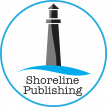

Save the Sound Reports Results from its 11th Bacteria Monitoring Season in Western Long Island Sound
The results of Save the Sound’s 2024 season of conducting fecal bacteria monitoring in the western Long Island Sound were similar to 2023, despite a drier sampling season—which may foreshadow years to come. Of the 739 water samples that trained volunteers collected from 64 sites from Greenwich, CT, through Westchester County and into Queens and Nassau County, NY, 60 percent failed to meet the states’ single sample safe swimming criteria. That overall failure rate is down four percent from 2023, but still up four percent from 2022. Save the Sound uses this testing to help identify regional trends and local pollution hotspots, and work with communities to improve public and ecological health.
The 71 percent failure rate for samples taken in wet weather conditions (when a half-inch or more of rain fell in the 72 hours prior to collection) decreased by two percent from 2023. Wet weather causes pollution to flush off the landscape into waterways and can trigger overflows of untreated or partially treated sewage. As in all past years, fecal contamination levels were higher after rainfall at most locations, though there were 200 fewer samples collected in wet weather conditions in 2024.
Dry weather samples failed 56 percent of the time, the same rate as the previous monitoring season. Dry weather failures in urbanized areas have been shown to be associated with leaks in sanitary sewer infrastructure, according to Peter Linderoth, director of water quality for Save the Sound.
“Sometimes, drought conditions allow pollutants—such as animal waste—to build up in and around stormwater infrastructure. When it finally does rain, that can result in a slug of highly polluted stormwater flushed from pipes into rivers or the Sound,” said Linderoth. “Conversely, frequent and intense storms bring large volumes of polluted stormwater to our waterways. As climate change accelerates, our region is predicted to see both more drought and more intense rain events, so this year’s results may give us a taste of what’s to come.”
Rivers remained the most polluted type of site sampled, failing 77 percent of the time.
“Stormwater pipes need to move water from high ground to low ground, so a lot of them discharge into rivers which then flow down to the Sound,” said Linderoth, noting there could as many as a hundred locations along the seven miles of the Mamaroneck River where polluted stormwater can be discharged. “Rivers receive pass or fail grades according to state safe swimming standards. While most people don’t swim in those rivers, they do run through backyards, along school properties, and across our communities. Kids play in them, dogs drink from them, teachers take their students out to them for class projects. These rivers at times carry dangerous levels of pathogens from fecal contamination that could make people and animals sick.”
Samples from embayment (59 percent—up six percent from 2023) and shoreline (71 percent—same as last year) locations passed more than half the time this season. Embayments tend to be more challenged by pollutants from wastewater and stormwater because they don’t experience as much tidal flushing with the open waters of the Sound the way open shorelines do.
Every location had at least one failing sample during the 12-week monitoring season. Seven sites, though, had only one.
